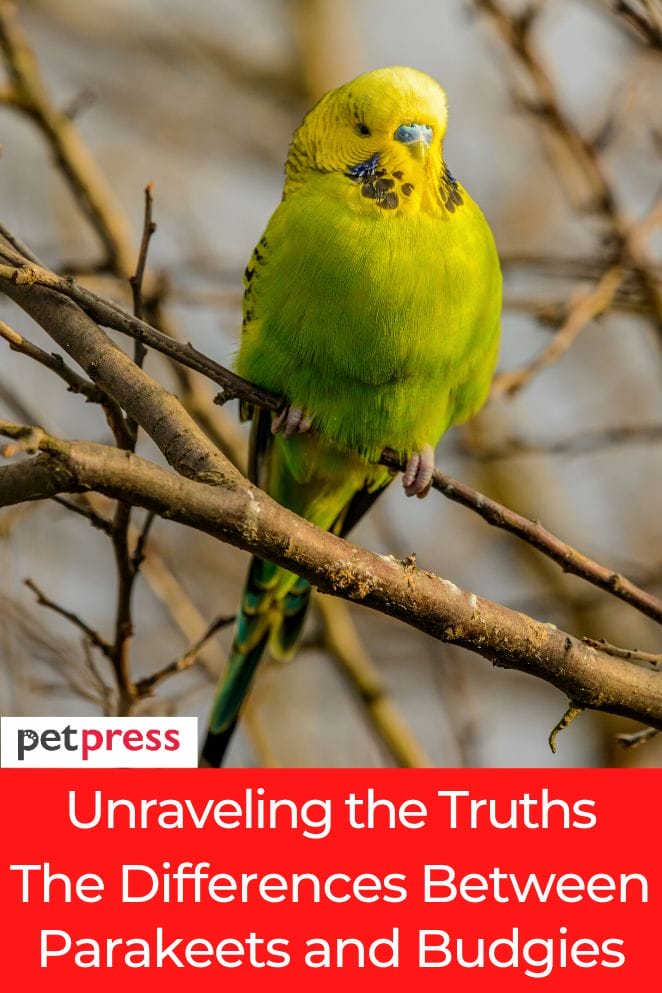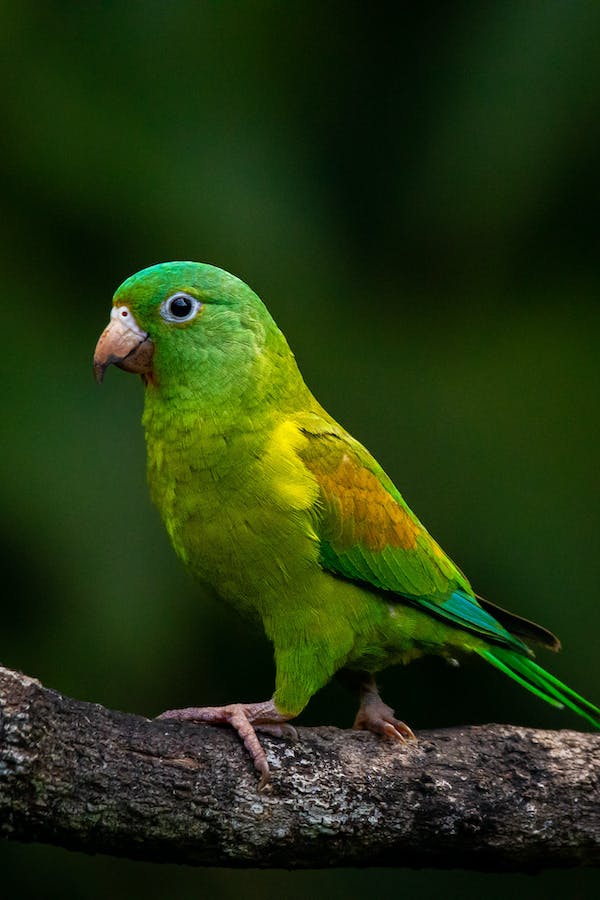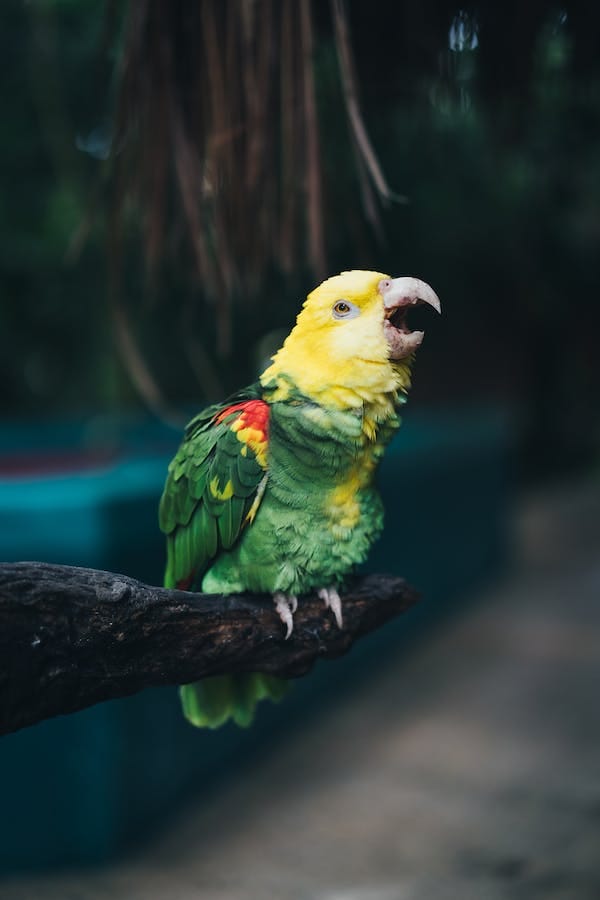
Parakeets and budgies, though often perceived as distinct, are, in fact, synonymous.
In the United States, these avian companions are commonly denoted as “parakeets,” whereas the global community recognizes them as “budgerigars” or simply “budgies.”
This nomenclatural discrepancy underscores the shared identity of these charming birds, fostering a nuanced understanding of their classification on an international scale.
Origins of Names
The term “budgerigar” finds its origins in the native Australian language, specifically from the word “Betcherrygah.”
The term “budgie” is a shortened form derived from this indigenous name.
In the Australian context, “betcherry” translates to ‘good,’ while “gah” refers to ‘parakeet.’
Therefore, when we refer to these vibrant birds as “budgerigars” or simply “budgies,” we are essentially acknowledging their connection to the Australian landscape and the positive connotation embedded in their original nomenclature.
This linguistic evolution sheds light on the rich cultural and linguistic tapestry from which the names of these beloved avian companions have been woven.
- Read also: How Long Does a Budgie Live?
- Read also: Top 10 Friendly Pet Bird Species
Popularity as Pets
The widespread popularity of parakeets, commonly known as budgies, as pets can be attributed to their amicable and gentle demeanor.
Renowned for their interactive tendencies, these birds have gained favor among pet enthusiasts for their ability to engage with their human companions.
Notably, parakeets showcase remarkable intelligence, as evidenced by their capacity to learn tricks and mimic human speech.
Through dedicated training and patience, these charming avian companions can become not only interactive but also adept at imitating various vocal expressions, adding an extra dimension to the joy they bring to households.

Types of Parakeets
Parakeets, a diverse group of captivating birds, encompass various categories, offering enthusiasts a rich array of species to appreciate and enjoy as pets.
Among these, two prominent groups stand out: Asiatic Parakeets and Grass Parakeets.
Asiatic Parakeets
The Asiatic Parakeets group consists of several distinct species, each with its unique characteristics and charm.
Notable members include the Indian Ringneck Parakeet, known for its striking plumage and eloquent speaking abilities.
These intelligent birds have become sought-after companions due to their sociable nature.
Grass Parakeets
On the other hand, the Grass parakeet group is equally captivating, featuring species like the Moustache Parakeet and the Rosellas.
The Moustache Parakeet, distinguished by its distinctive facial markings resembling a mustache, is adored for its playful disposition and vibrant colors.
Meanwhile, the Rosellas, known for their breathtakingly beautiful plumage, add a burst of color to any aviary or household.
Breeding
In their natural habitat, parakeets exhibit social behaviors by residing in expansive flocks.
However, when it comes to forming lifelong connections, these birds adopt a monogamous lifestyle by selecting a single partner.
This choice results in the formation of enduring pairs within the larger flock.
The significant aspect of their reproductive cycle occurs during the spring season, which serves as the designated mating period for most parakeet species.
During this time, the avian community experiences a surge of activity as pairs engage in courtship rituals, demonstrating their commitment to each other.
The commitment to monogamy in parakeet relationships adds a layer of significance to their social structure.
This aspect of their behavior showcases the complexity and depth of their connections within the flock, highlighting the importance of these bonds in the overall dynamics of their communal living.

Common Health Issues
While parakeets are generally robust birds, like any other pets, they can encounter health issues that require attentive care.
Understanding these common health concerns is crucial for responsible pet ownership.
Respiratory problems
Parakeets may experience respiratory issues, such as difficulty breathing or sneezing.
These symptoms could be indicative of infections or environmental factors affecting their respiratory system.
Internal defects
Internal defects can be congenital or acquired, impacting the bird’s internal organs or systems. Regular veterinary check-ups can aid in early detection.
Viral infections
Parakeets are susceptible to various viral infections that can compromise their health. Timely vaccinations and a clean living environment can mitigate these risks.
Exposure to Pesticides
Contact with pesticides poses a threat to parakeets.
Ensuring a pesticide-free environment and being cautious about potential exposure are preventive measures.
Heavy metals or toxins
Ingesting heavy metals or other toxins can adversely affect a parakeet’s health.
Careful monitoring of their surroundings and diet helps prevent accidental ingestion.
Deficiency of vitamins
Insufficient vitamin intake can lead to health issues. Providing a well-balanced diet with vitamin-rich foods supports overall avian health.
Iodine deficiency
Parakeets require proper iodine levels for thyroid function. Dietary adjustments or supplements may be necessary to address iodine deficiencies.
In addition to these concerns, parakeets may face challenges like:
- Mites
- Excessive egg-laying
- Scratching
- Feather-plucking
- Tumors
- Goiter
- Reproductive problems.
Recognizing symptoms such as swollen or sore eyes, sticky droppings, fluffed-up feathers, excessive squawking, or lethargy is crucial.
If any of these signs manifest, seeking prompt veterinary attention is essential.
Maintaining good nutrition and providing attentive care are foundational to keeping parakeets healthy and content.
Regular veterinary check-ups, a balanced diet, and a clean living environment contribute to the overall well-being of these delightful avian companions.
Parakeet vs Budgie
The terms “parakeet” and “budgie” are interchangeable, both denoting the same delightful bird.
This nomenclatural dualism is akin to the distinction between Congo and Timneh parrots, which are two distinct species with separate taxonomical identities.
In essence, whether you hear someone referring to a parakeet or a budgie, they are likely mentioning the same feathered friend.
This linguistic variation does not signify a difference in the species but rather reflects regional or colloquial preferences in naming.

Why do Americans call budgies parakeets?
In the United States, the endearing bird known globally as a “budgerigar” or simply “budgie” goes by the name “parakeet.”
This discrepancy in terminology can be attributed to regional linguistic nuances.
While the rest of the world opts for the more direct “budgerigar” or the affectionate “budgie,” Americans commonly use the term “parakeet” to refer to these charming avian companions.
This variance in nomenclature underscores the diverse ways in which people across different regions and cultures may label the same species.
- Read also: Top 7 Types of Birds That Can Talk
- Read also: 7-Step Guide To Training Your Parrot to Talk Like a Pro
Conclusion
Whether referred to as parakeets or budgies, these charming pets flourish when provided with a diet rich in essential nutrients.
Renowned for their playful, active, and remarkably adaptable nature, they have gained global popularity as cherished companions.
These delightful birds showcase their best qualities when given a well-balanced, nutritious diet.
Their playful and active demeanor, coupled with their impressive adaptability, makes them beloved pets across the world.
Regardless of the name one uses, ensuring they receive proper nourishment contributes to their overall well-being and enhances the joy they bring to households.


GIPHY App Key not set. Please check settings